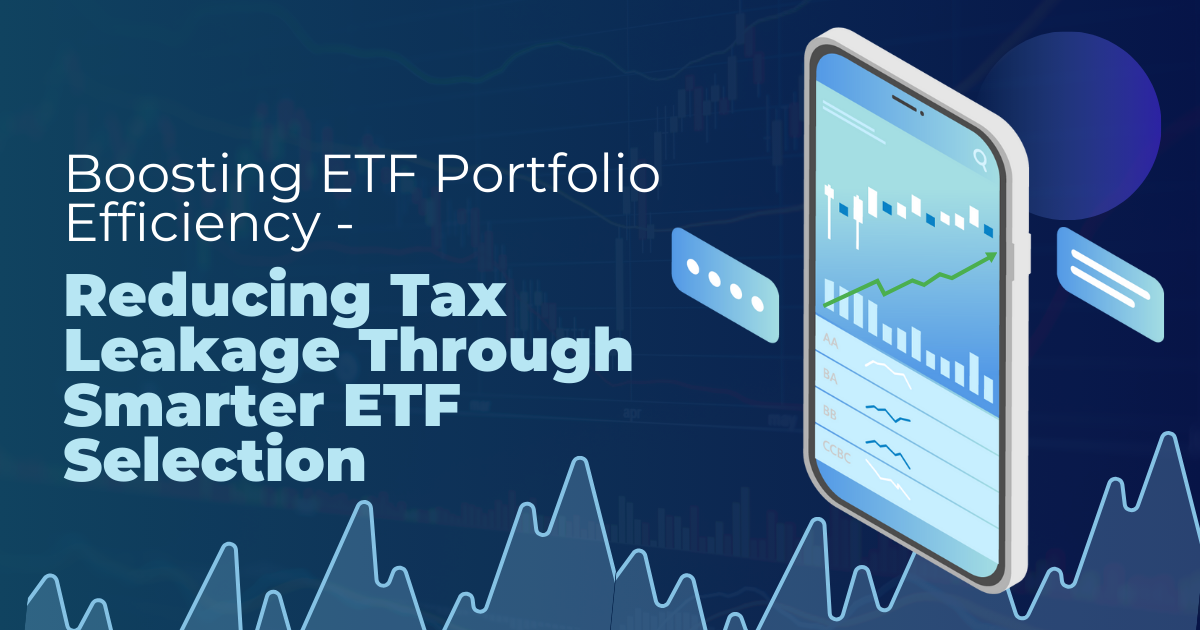Investment Horizon
Table of Contents
Investment Horizon
The investment horizon specifies how long a shareholder is expected to keep an asset or holdings before trading it. According to the demand for finances and the willingness to take risks, an individual can invest in financial instruments quickly. It may be a couple of days or hours or a long period of time, i.e. a couple of years or even several decades.
What is the investment horizon?
As a shareholder, keep in mind that the choice of risk tolerance and investment horizon is going to be crucial. One needs to ensure that medium- and short-term ambitions are funded by safer debt assets. Bank savings and liquid cash that can assist them in achieving their immediate goals of only a few months or an entire year are both wise investments. One can select between brief indebtedness and bank savings for aims that last a few more years. Equities are a smart choice if the investment horizon is more than five years.
Equities offer a greater risk-adjusted profit than money or revenue instruments of a defined nature and the investment horizon is longer. Since equities have higher amounts of unpredictability associated with them, time frames for investing and equities overall as a category of assets tend to become riskier.
Understanding of investment horizon
The phrase “investment horizon” refers to the overall period of time over which an investor anticipates holding securities or a portfolio of securities.
It specifies how long an investor is expected to keep an asset or holdings before releasing it. According to the demand for finances and the willingness to take risks, an individual can make investments in financial instruments for a short period of time. It may be for a few days or hours, a long period, a few years at a time or even a few decades.
The length of time over which one expects holding a stock to achieve a particular objective is known as an investment horizon. Bonds and stocks are the two main groups into which investments are often divided. The more conservative or risky an investment strategy is the more significant the time horizon.
Types of investment horizon
The investment horizon for mutual money funds may be divided into three categories based on their kind: short-term, medium-term, and long-term funds.
- Short–term: Mutual fund investments with a brief investment period typically have a time horizon of one to three years. An investment with a short time horizon is one that is shorter than 36 months with bond funds as well as fewer than 12 months for equities and well-diversified funds.
- Medium-Term Mutual Funds: Investors often hold investments in these mutual funds for 5-7 years, while they offer an investment duration of over 36 months and 3 years. This group includes bonds having a 1 to 5-year duration for investments and investments in equity featuring a 3 to 7-year duration.
- Mutual Funds for the Long Term: These kinds of funds offer the longest investment horizons, which may extend as long as a decade. This group includes equities securities with a time horizon of 7–20 years plus debt investments with a duration of 5–20 years.
Calculations of investment horizon
It’s simple to determine where to invest in the time horizon. When something actually occurs. The time frame one has is 30 years, for instance, if a person is 30 today and plans to retire at 60. Although it’s not exactly easy, that is the general idea.
The following equation can be used to determine the value of capital:
ROI = Net Profit / Cost of Investment * 100
The ROI reveals to the shareholder how profitable the expenditures were. The gain that investors make from mutual fund plans is shown by the return that they receive if they spend their cash in mutual funds.
Example of investment horizon
The investment horizon specifies how long a shareholder is expected to keep an asset or portfolio of securities before trading it.
Let us assume that Carol, a 30-year-old software engineer, is employed. She is risk-averse and possesses a long investing horizon. Due to this, she uses her funds to purchase a house and fixed-income investments that would pay in the following 30 years.
Frequently Asked Questions
The amount of risk a shareholder is subjected to and their monetary demands are frequently determined by the duration of their investment window. Shorter investment horizons in stocks typically indicate that consumers are less risk-tolerant. A shareholder can design a more ambitious or riskier investment the longer their time horizon spans.
The time horizon is crucial since it determines how much money must be saved or invested in order to achieve a particular objective.
Both long-term and short-term objectives will be part of an overall financial strategy. The plan for purchasing a new yacht in the midst of the holiday season is going to vary from one for preparing for retirement.
Cash, stocks, and bonds are three different asset types that one might incorporate into a strategy. These investments can all be included in the investments, and an accountant can offer suggestions on how to allocate them so that they best serve the goals.
Risk acceptance. Higher risk-tolerant investors are typically more likely to make longer-term investments
- Investing objectives
- Age
- Market circumstances
- Investment kind
- Long-term stability vs short-term volatility
- Allocating assets strategically
- Average Dollar Cost
A lengthier investment horizon might result in significantly higher earnings versus an investment with a brief duration since interest multiplies rapidly. This is because it’s crucial to start saving for retirement early. If given a few years to develop, little investments made today can yield significant returns.
The amount of risk a shareholder is subjected to and his monetary demands are frequently determined by the duration of the investment horizon. Smaller investment horizons in inventories typically indicate that individuals are less risk-tolerant. The identical scenario holds true for medium-term and long-term investments.
Related Terms
- Non-Diversifiable Risk
- Liability-Driven Investment (LDI)
- Guaranteed Investment Contract (GIC)
- Flash Crash
- Cost Basis
- Deferred Annuity
- Cash-on-Cash Return
- Bubble
- Asset Play
- Accrued Market Discount
- Inflation Hedge
- Incremental Yield
- Holding Period Return
- Hedge Effectiveness
- Fallen Angel
- Non-Diversifiable Risk
- Liability-Driven Investment (LDI)
- Guaranteed Investment Contract (GIC)
- Flash Crash
- Cost Basis
- Deferred Annuity
- Cash-on-Cash Return
- Bubble
- Asset Play
- Accrued Market Discount
- Inflation Hedge
- Incremental Yield
- Holding Period Return
- Hedge Effectiveness
- Fallen Angel
- EBITDA Margin
- Dollar Rolls
- Dividend Declaration Date
- Distribution Yield
- Derivative Security
- Fiduciary
- Current Yield
- Core Position
- Cash Dividend
- Broken Date
- Share Classes
- Valuation Point
- Breadth Thrust Indicator
- Book-Entry Security
- Bearish Engulfing
- Core inflation
- Approvеd Invеstmеnts
- Allotment
- Annual Earnings Growth
- Solvency
- Impersonators
- Reinvestment date
- Volatile Market
- Trustee
- Sum-of-the-Parts Valuation (SOTP)
- Proxy Voting
- Passive Income
- Diversifying Portfolio
- Open-ended scheme
- Capital Gains Distribution
- Investment Insights
- Discounted Cash Flow (DCF)
- Portfolio manager
- Net assets
- Nominal Return
- Systematic Investment Plan
- Issuer Risk
- Fundamental Analysis
- Account Equity
- Withdrawal
- Realised Profit/Loss
- Unrealised Profit/Loss
- Negotiable Certificates of Deposit
- High-Quality Securities
- Shareholder Yield
- Conversion Privilege
- Cash Reserve
- Factor Investing
- Open-Ended Investment Company
- Front-End Load
- Tracking Error
- Replication
- Real Yield
- DSPP
- Bought Deal
- Bulletin Board System
- Portfolio turnover rate
- Reinvestment privilege
- Initial purchase
- Subsequent Purchase
- Fund Manager
- Target Price
- Top Holdings
- Liquidation
- Direct market access
- Deficit interest
- EPS forecast
- Adjusted distributed income
- International securities exchanges
- Margin Requirement
- Pledged Asset
- Stochastic Oscillator
- Prepayment risk
- Homemade leverage
- Prime bank investments
- ESG
- Capitulation
- Shareholder service fees
- Insurable Interest
- Minority Interest
- Passive Investing
- Market cycle
- Progressive tax
- Correlation
- NFT
- Carbon credits
- Hyperinflation
- Hostile takeover
- Travel insurance
- Money market
- Dividend investing
- Digital Assets
- Coupon yield
- Counterparty
- Sharpe ratio
- Alpha and beta
- Investment advisory
- Wealth management
- Variable annuity
- Asset management
- Value of Land
- Investment Policy
- Forward Contracts
- Equity Hedging
- Encumbrance
- Money Market Instruments
- Share Market
- Opening price
- Transfer of Shares
- Alternative investments
- Lumpsum
- Derivatives market
- Operating assets
- Hypothecation
- Accumulated dividend
- Assets under management
- Endowment
- Return on investment
- Investments
- Acceleration clause
- Heat maps
- Lock-in period
- Tranches
- Stock Keeping Unit
- Real Estate Investment Trusts
- Prospectus
- Turnover
- Tangible assets
- Preference Shares
- Open-ended investment company
- Ordinary Shares
- Leverage
- Standard deviation
- Independent financial adviser
- ESG investing
- Earnest Money
- Primary market
- Leveraged Loan
- Transferring assets
- Shares
- Fixed annuity
- Underlying asset
- Quick asset
- Portfolio
- Mutual fund
- Xenocurrency
- Bitcoin Mining
- Option contract
- Depreciation
- Inflation
- Cryptocurrency
- Options
- Fixed income
- Asset
- Reinvestment option
- Capital appreciation
- Style Box
- Top-down Investing
- Trail commission
- Unit holder
- Yield curve
- Rebalancing
- Vesting
- Private equity
- Bull Market
- Absolute Return
- Leaseback
- Impact investing
- Venture Capital
- Buy limit
- Asset stripper
- Volatility
- Investment objective
- Annuity
- Sustainable investing
- Face-amount certificate
- Lipper ratings
- Investment stewardship
- Average accounting return
- Asset class
- Active management
- Breakpoint
- Expense ratio
- Bear market
- Hedging
- Equity options
- Dollar-Cost Averaging (DCA)
- Due Diligence
- Contrarian Investor
Most Popular Terms
Other Terms
- Protective Put
- Perpetual Bond
- Option Adjusted Spread (OAS)
- Merger Arbitrage
- Income Bonds
- Equity Carve-Outs
- Cost of Equity
- Earning Surprise
- Capital Adequacy Ratio (CAR)
- Beta Risk
- Bear Spread
- Ladder Strategy
- Junk Status
- Intrinsic Value of Stock
- Interest-Only Bonds (IO)
- Interest Coverage Ratio
- Industry Groups
- Industrial Bonds
- Income Statement
- Historical Volatility (HV)
- Flat Yield Curve
- Exotic Options
- Execution Risk
- Exchange-Traded Notes
- Event-Driven Strategy
- Eurodollar Bonds
- Enhanced Index Fund
- Embedded Options
- Dynamic Asset Allocation
- Dual-Currency Bond
- Downside Capture Ratio
- Dividend Capture Strategy
- Depositary Receipts
- Delta Neutral
- Deferment Payment Option
- Dark Pools
- Death Cross
- Debt-to-Equity Ratio
- Fixed-to-floating rate bonds
- First Call Date
- Financial Futures
- Firm Order
- Credit Default Swap (CDS)
- Covered Straddle
- Contingent Capital
- Conduit Issuers
- Company Fundamentals
- Commodities Index
- Chart Patterns
- Candlestick Chart
Know More about
Tools/Educational Resources
Markets Offered by POEMS
Read the Latest Market Journal

Recognising Biases in Investing and Tips to Avoid Them
Common biases like overconfidence, herd mentality, and loss aversion influence both risk assessment and decision-making....

What is Money Dysmorphia and How to Overcome it?
Money dysmorphia happens when the way you feel about your finances doesn’t match the reality...

The Employer’s Guide to Domestic Helper Insurance
Domestic Helper insurance may appear to be just another compliance task for employers in Singapore,...

One Stock, Many Prices: Understanding US Markets
Why Isn’t My Order Filled at the Price I See? Have you ever set a...

Why Every Investor Should Understand Put Selling
Introduction Options trading can seem complicated at first, but it offers investors flexible strategies to...

Mastering Stop-Loss Placement: A Guide to Profitability in Forex Trading
Effective stop-loss placement is a cornerstone of prudent risk management in forex trading. It’s not...

Boosting ETF Portfolio Efficiency: Reducing Tax Leakage Through Smarter ETF Selection
Introduction: Why Tax Efficiency Matters in Global ETF Investing Diversification is the foundation of a...

How to Build a Diversified Global ETF Portfolio
Introduction: Why Diversification Is Essential in 2025 In our June edition article (https://www.poems.com.sg/market-journal/the-complete-etf-playbook-for-singapore-investors-from-beginner-to-advanced-strategies/), we introduced...









